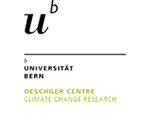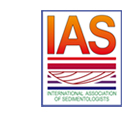Plenary Speaker - Anil Kulkarni

Downloads
> View the online video with slides
> Download the powerpoint presentation (pdf)
Biography
Anil V. Kulkarni
Divecha Center for Climate Change
Indian Institute of Science, Bangalore, India
anilkulkarni@caos.iisc.ernet.in
Dr. Anil Kulkarni is a Distinguished Visiting Scientist at the Divecha Centre for Climate Change, Indian Institute of Science, Bangalore, India. His research interests are snow and glacier investigations using remote sensing methods. These include modeling the influence of climate change on glacier mass balance and on stream runoff. His investigations have shown the impact of climate change on the Himalayan cryosphere and on glacier melt runoff. He was an invited speaker at the Himalayan Chief Ministers’ conclave and is also leading numerous programs to study the Himalayan cryosphere.
Abstract: State of of the Himalayan cryosphere
The Himalaya region has one of the largest concentrations of glaciers and many rivers such as the Indus, Ganga, and Bramhputra originate from glacier bound regions. However, this source of water may be influenced in the future, as the Himalayan cryosphere is constantly changing. Therefore, the retreat of Himalayan glaciers and its impact on water availability is being discussed extensively in scientific and public forums in India. Conventionally, the health of glaciersis assessed through changes in glacial length. This could be misleading, as a change in length may be caused by numerous climatically sensitive and other terrain parameters. These influences can produce complex patterns of glacial retreat and may lead to erroneous conclusions. Therefore, it would be useful to understand changes in glacial mass to assess future changes in glacial extent.
Measurements of mass budget for glaciers in the Karakoram-Himalaya (K-H) region are relatively few and cover only a short duration. The available data suggest that mass budget over large parts of the Himalaya region has been negative over past decades. Estimates suggest that glaciers in the K-H region are losing mass at the rate of approximately 19.58±11.42 Gt per year. However, the loss in mass of many small glaciers located in a low altitude range could be as high as 1000 kg m-2 y-1. These small glaciers and ice fields are important sources of water for many mountain communities.
In addition to changes in temperature and precipitation, in the future, glacial retreat and mass balance will be further influenced by the formation of glacier lakes and the deposition of black carbon in accumulation areas. Therefore, continuous monitoring is needed to understand the changing dynamics of Himalayan glaciers. In my talk, I will discuss these issues and also discuss the present state of Himalayan cryosphere.















